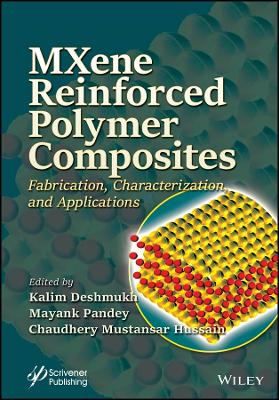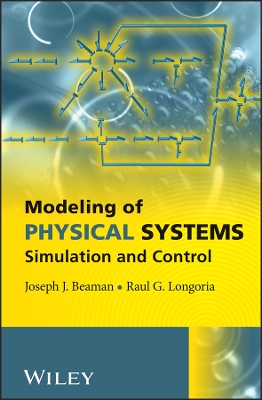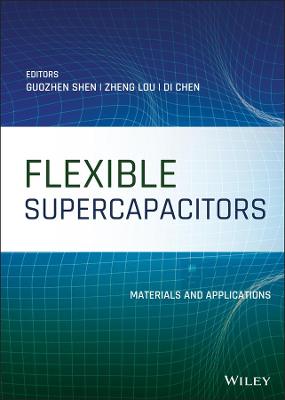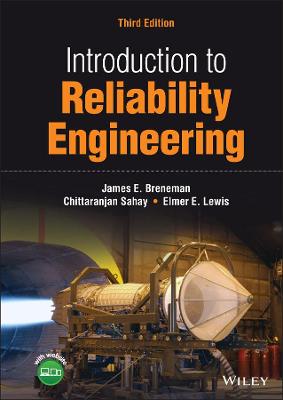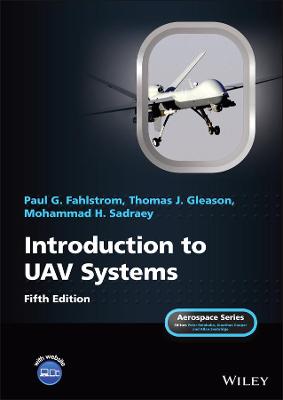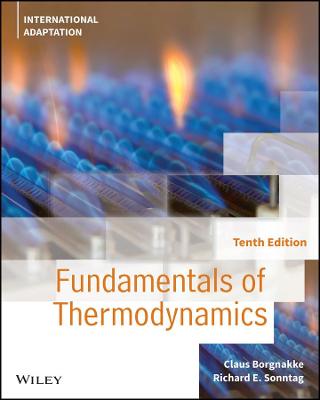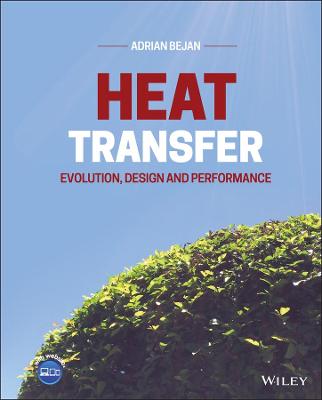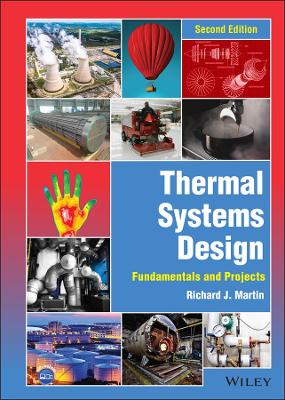Wide Bandgap Nanowires
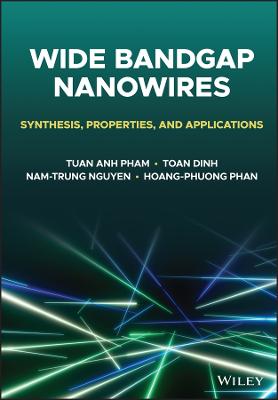 -15%
portes grátis
-15%
portes grátis
Wide Bandgap Nanowires
Synthesis, Properties, and Applications
Pham, Tuan Anh; Phan, Hoang-Phuong; Dinh, Toan; Nguyen, Nam-Trung
John Wiley & Sons Inc
10/2022
272
Dura
Inglês
9781119774372
15 a 20 dias
716
Bottom-up growth methods 8
Abstract 8
1.1. Introduction 9
1.2. Bottom-up growth mechanisms 10
1.2.1. Vapor-liquid-solid growth mechanism 10
1.2.2. Vapor-solid-solid growth mechanism 16
1.2.3. Vapor-solid growth mechanism 22
1.2.4. Solution-liquid-solid growth mechanism 26
1.3. Bottom-up growth techniques 29
1.3.1. Chemical Vapor Deposition 29
1.3.2. Metal-organic chemical vapor deposition 33
1.3.3. Plasma-enhanced chemical vapor deposition 36
1.3.4. Hydride vapor phase epitaxy 38
1.3.5. Molecular Beam Epitaxy 41
1.3.6. Laser ablation 44
1.3.7. Thermal evaporation 46
1.3.8. Carbothermal reduction 48
References 51
Chapter 2 65
Top-down fabrication processes 65
Abstract 65
2.1. Introduction 66
2.2. Top-down fabrication techniques 68
2.2.1. Focused ion beam 68
2.2.2. Electron beam lithography 69
2.2.3. Reactive ion etching 72
2.2.4. Combined lithography techniques 74
References 76
Chapter 3 81
Hybrid fabrication techniques and nanowire heterostructures 81
Abstract 81
3.1. Introduction 82
3.2. Bottom-up meets top-down approaches 84
3.3. Integration of nanowires onto unconventional substrates 86
3.3.1. Transferring nanowires onto flexible substrates 86
3.3.2. Growing nanowires on graphene and layered material substrates 92
3.4. Synthesis of nanowire heterostructures 95
3.4.1. Synthesis of one-dimensional heterostructures 95
3.4.2. Synthesis of mixed dimensional heterostructures 98
References 101
Chapter 4 108
Electrical properties of wide bandgap nanowires 108
Abstract 108
4.1. Electrical properties 109
4.2. Measurement of electrical conductivity 109
4.3. Fundamental electrical properties of nanowires 112
4.3.1 Effect of doping on electrical properties 113
4.3.2 Mobility 115
4.3.3 Activation/ionization energy 116
4.3.4 Dependence of activation/ionization energy on NW dimensions 118
4.4 Electrical properties of wide bandgap nanowire based devices 118
4.4.1 Single NW electrical sensing devices 118
4.4.2 Field-effect transistors (FETs) 120
References 129
Chapter 5 132
Mechanical properties of wide bandgap nanowires 132
Abstract 132
5.1. Characterization techniques 133
5.1.1 Bending and buckling methods 133
5.1.2 Nano indenting method 138
5.1.3 Resonance testing method 139
5.2. Impact of defects and microstructures on mechanical properties of NWs 140
5.2.1. Defects 140
5.2.2 Effect of structures, dimensions and temperatures 143
5.3. Anelasticity and plasticity properties 148
5.3.1 Anelasticity 148
5.3.2 Plasticity 148
5.3.3 Brittle to ductile transition 150
References 152
Chapter 6 155
Optical properties of wide bandgap nanowires 155
Abstract 155
6.1 Optical properties of WBG NWs 156
6.1.1 Photoluminescence characterization of NWs 156
6.1.2 Size-dependent optical properties 157
6.1.3 Shape/morphology-dependent optical properties 158
6.1.4 Effect of crystal orientation 159
6.1.5 Tuning optical properties of NWs 160
6.2 Wide bangap nanowire light-emitting diodes (LEDs) 164
6.2.1 GaN nanowire based LEDs 164
6.2.2 GaN nanowire UV LEDs 169
6.2.3 ZnO nanowire based LEDs 172
References 175
Chapter 7 180
Thermal properties of wide bandgap nanowires 180
Abstract 180
7.1. Thermal conductivity 181
7.1.1 Fundamental of thermal transport and thermal conductivity 181
7.1.2 Measurement of thermal conductivity 182
7.1.3 Effect of diameters on thermal properties 183
7.1.4 Effect of orientation on thermal properties 186
7.1.5 Tenability of thermal properties 187
7.2 Thermoelectric properties 190
7.2.1 Fundamental thermoelectric properties 190
7.2.2 Thermoelectric properties of ZnO and GaN NWs 191
7.2.3 Thermoelectric properties of SiC NWs 193
7.2.4 Optimisation of the thermoelectric properties 194
References 196
Chapter 8 200
Ultraviolet sensors 200
Abstract 200
8.1. Introduction 201
8.2. Sensing mechanism 201
8.2.1. Photoconductor architectures 202
8.2.2. Schottky diode photo sensors 204
8.2.3. Semiconductor p-n junction 206
8.2.4. Field effect transistor-based UV sensors 208
8.3. Device development technologies 210
8.3.1. The choice of wide band gap materials for UV sensing 210
8.3.2 Top down fabrication of wide band gap nanowire UV sensors 216
8.3.4. Transfer process for nanowires 219
8.4. Applications of nanowire UV sensors 222
8.4.1 Flame sensors 222
8.4.2. Environmental monitoring 224
8.4.4 Biological sensors and health care applications 225
References 227
Chapter 9 233
Mechanical Sensors 233
Abstract 233
9.1. Introduction 234
9.2. Sensing mechanisms and corresponding materials 234
9.2.1. The piezoresistive effect 234
9.2.2. Piezotronics effect in nanowires 239
9.2.3 Capacitive sensing 243
9.3. Transducer configurations and fabrication technologies 244
9.3.1. Strain sensors 244
9.3.2. Pressure sensors 248
9.3.3 Tactile sensors 253
9.3.4. Acceleration and vibration sensors 256
9.3.5. Energy harvesting devices 257
9.4. Applications of mechanical sensors using wide band gap materials 261
9.4.1. Structural heath monitoring 261
9.4.2. Advanced health care 262
9.4.3 Robotics 265
References 267
Chapter 10 273
Gas sensors 273
Abstract 273
10.1. Introduction 274
10.2. Principle of gas sensing 274
10.2.1. Transconductance sensing mechanism 274
10.2.2. Field effect transistor-based gas sensors 276
10.2.3. Metal-semiconductor Schottky contact based gas sensors 277
10.2.4. Integration of nanowires with micro heaters 278
10.3. Standard physical parameters for gas sensors 280
10.3.1. Sensitivity 280
10.3.2. Selectivity 281
10.3.3. Response time 282
10.4. Materials for different types of gases 284
10.4.1 Oxygen sensors 284
10.4.2 Carbon dioxide 285
10.4.3 Organic gases 287
10.4.4 Hydrogen gas 290
References 301
Chapter 11 308
Wide band gap nanoresonators 308
Abstract 308
11.1. Introduction 309
11.2. Principle of nanoresonators 310
11.3. Actuation and measurement techniques 316
11.3.1 Electrostatic actuation 316
11.3.2 Piezoelectric actuation 318
11.3.3 Magnetomotive actuation 320
11.3.4. Thermal actuator 323
11.4. Engineering the performance of nanoresonators using wide band gap materials 325
11.4.1. Residual stress 325
11.4.2 Mechanical clamping enhancement 329
11.4.3 Tunning resonant frequency using electrically driven forces 331
11.5. Applications of nanoresonators 334
11.5.1 Logic Circuit at high temperatures 334
11.5.2 Mass sensing applications 337
11.5.3 Biosensors 338
11.5.4 Mechanical sensing 339
11.5.5 Optical devices 341
References 343
Bottom-up growth methods 8
Abstract 8
1.1. Introduction 9
1.2. Bottom-up growth mechanisms 10
1.2.1. Vapor-liquid-solid growth mechanism 10
1.2.2. Vapor-solid-solid growth mechanism 16
1.2.3. Vapor-solid growth mechanism 22
1.2.4. Solution-liquid-solid growth mechanism 26
1.3. Bottom-up growth techniques 29
1.3.1. Chemical Vapor Deposition 29
1.3.2. Metal-organic chemical vapor deposition 33
1.3.3. Plasma-enhanced chemical vapor deposition 36
1.3.4. Hydride vapor phase epitaxy 38
1.3.5. Molecular Beam Epitaxy 41
1.3.6. Laser ablation 44
1.3.7. Thermal evaporation 46
1.3.8. Carbothermal reduction 48
References 51
Chapter 2 65
Top-down fabrication processes 65
Abstract 65
2.1. Introduction 66
2.2. Top-down fabrication techniques 68
2.2.1. Focused ion beam 68
2.2.2. Electron beam lithography 69
2.2.3. Reactive ion etching 72
2.2.4. Combined lithography techniques 74
References 76
Chapter 3 81
Hybrid fabrication techniques and nanowire heterostructures 81
Abstract 81
3.1. Introduction 82
3.2. Bottom-up meets top-down approaches 84
3.3. Integration of nanowires onto unconventional substrates 86
3.3.1. Transferring nanowires onto flexible substrates 86
3.3.2. Growing nanowires on graphene and layered material substrates 92
3.4. Synthesis of nanowire heterostructures 95
3.4.1. Synthesis of one-dimensional heterostructures 95
3.4.2. Synthesis of mixed dimensional heterostructures 98
References 101
Chapter 4 108
Electrical properties of wide bandgap nanowires 108
Abstract 108
4.1. Electrical properties 109
4.2. Measurement of electrical conductivity 109
4.3. Fundamental electrical properties of nanowires 112
4.3.1 Effect of doping on electrical properties 113
4.3.2 Mobility 115
4.3.3 Activation/ionization energy 116
4.3.4 Dependence of activation/ionization energy on NW dimensions 118
4.4 Electrical properties of wide bandgap nanowire based devices 118
4.4.1 Single NW electrical sensing devices 118
4.4.2 Field-effect transistors (FETs) 120
References 129
Chapter 5 132
Mechanical properties of wide bandgap nanowires 132
Abstract 132
5.1. Characterization techniques 133
5.1.1 Bending and buckling methods 133
5.1.2 Nano indenting method 138
5.1.3 Resonance testing method 139
5.2. Impact of defects and microstructures on mechanical properties of NWs 140
5.2.1. Defects 140
5.2.2 Effect of structures, dimensions and temperatures 143
5.3. Anelasticity and plasticity properties 148
5.3.1 Anelasticity 148
5.3.2 Plasticity 148
5.3.3 Brittle to ductile transition 150
References 152
Chapter 6 155
Optical properties of wide bandgap nanowires 155
Abstract 155
6.1 Optical properties of WBG NWs 156
6.1.1 Photoluminescence characterization of NWs 156
6.1.2 Size-dependent optical properties 157
6.1.3 Shape/morphology-dependent optical properties 158
6.1.4 Effect of crystal orientation 159
6.1.5 Tuning optical properties of NWs 160
6.2 Wide bangap nanowire light-emitting diodes (LEDs) 164
6.2.1 GaN nanowire based LEDs 164
6.2.2 GaN nanowire UV LEDs 169
6.2.3 ZnO nanowire based LEDs 172
References 175
Chapter 7 180
Thermal properties of wide bandgap nanowires 180
Abstract 180
7.1. Thermal conductivity 181
7.1.1 Fundamental of thermal transport and thermal conductivity 181
7.1.2 Measurement of thermal conductivity 182
7.1.3 Effect of diameters on thermal properties 183
7.1.4 Effect of orientation on thermal properties 186
7.1.5 Tenability of thermal properties 187
7.2 Thermoelectric properties 190
7.2.1 Fundamental thermoelectric properties 190
7.2.2 Thermoelectric properties of ZnO and GaN NWs 191
7.2.3 Thermoelectric properties of SiC NWs 193
7.2.4 Optimisation of the thermoelectric properties 194
References 196
Chapter 8 200
Ultraviolet sensors 200
Abstract 200
8.1. Introduction 201
8.2. Sensing mechanism 201
8.2.1. Photoconductor architectures 202
8.2.2. Schottky diode photo sensors 204
8.2.3. Semiconductor p-n junction 206
8.2.4. Field effect transistor-based UV sensors 208
8.3. Device development technologies 210
8.3.1. The choice of wide band gap materials for UV sensing 210
8.3.2 Top down fabrication of wide band gap nanowire UV sensors 216
8.3.4. Transfer process for nanowires 219
8.4. Applications of nanowire UV sensors 222
8.4.1 Flame sensors 222
8.4.2. Environmental monitoring 224
8.4.4 Biological sensors and health care applications 225
References 227
Chapter 9 233
Mechanical Sensors 233
Abstract 233
9.1. Introduction 234
9.2. Sensing mechanisms and corresponding materials 234
9.2.1. The piezoresistive effect 234
9.2.2. Piezotronics effect in nanowires 239
9.2.3 Capacitive sensing 243
9.3. Transducer configurations and fabrication technologies 244
9.3.1. Strain sensors 244
9.3.2. Pressure sensors 248
9.3.3 Tactile sensors 253
9.3.4. Acceleration and vibration sensors 256
9.3.5. Energy harvesting devices 257
9.4. Applications of mechanical sensors using wide band gap materials 261
9.4.1. Structural heath monitoring 261
9.4.2. Advanced health care 262
9.4.3 Robotics 265
References 267
Chapter 10 273
Gas sensors 273
Abstract 273
10.1. Introduction 274
10.2. Principle of gas sensing 274
10.2.1. Transconductance sensing mechanism 274
10.2.2. Field effect transistor-based gas sensors 276
10.2.3. Metal-semiconductor Schottky contact based gas sensors 277
10.2.4. Integration of nanowires with micro heaters 278
10.3. Standard physical parameters for gas sensors 280
10.3.1. Sensitivity 280
10.3.2. Selectivity 281
10.3.3. Response time 282
10.4. Materials for different types of gases 284
10.4.1 Oxygen sensors 284
10.4.2 Carbon dioxide 285
10.4.3 Organic gases 287
10.4.4 Hydrogen gas 290
References 301
Chapter 11 308
Wide band gap nanoresonators 308
Abstract 308
11.1. Introduction 309
11.2. Principle of nanoresonators 310
11.3. Actuation and measurement techniques 316
11.3.1 Electrostatic actuation 316
11.3.2 Piezoelectric actuation 318
11.3.3 Magnetomotive actuation 320
11.3.4. Thermal actuator 323
11.4. Engineering the performance of nanoresonators using wide band gap materials 325
11.4.1. Residual stress 325
11.4.2 Mechanical clamping enhancement 329
11.4.3 Tunning resonant frequency using electrically driven forces 331
11.5. Applications of nanoresonators 334
11.5.1 Logic Circuit at high temperatures 334
11.5.2 Mass sensing applications 337
11.5.3 Biosensors 338
11.5.4 Mechanical sensing 339
11.5.5 Optical devices 341
References 343

